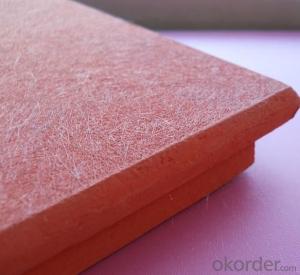Suspended ceilings have been a staple in modern architecture for decades, offering a versatile and functional solution to the demands of contemporary spaces. But what exactly is a suspended ceiling grid, and why is it so crucial to the overall design and function of a ceiling? Lets dive into the world of suspended ceilings and explore the backbone of modern ceilings.
The Grid System: A Simple Explanation
A suspended ceiling grid is essentially a network of lightweight frames that create a modular system for the ceiling. Its made up of main runners, cross tees, and various other components that work together to support the ceiling tiles. The grid system is designed to be easily assembled and disassembled, allowing for flexibility in design and easy access to the space above the ceiling for maintenance and installations.
Why Suspended Ceilings?
The reasons for choosing a suspended ceiling are numerous. They can hide unsightly wiring, ductwork, and plumbing, creating a clean and streamlined appearance. They also provide excellent acoustic properties, helping to reduce noise and echo in large spaces. Moreover, they contribute to thermal control, improving energy efficiency by trapping warm or cool air within a building.
The Art of Concealment
One of the primary benefits of a suspended ceiling is its ability to conceal a multitude of sins. Whether its outdated wiring, HVAC systems, or just the plain, unattractive underside of a concrete slab, a suspended ceiling can make it all disappear. Its like a magicians cloak, transforming the look of a space with a simple wave of its wand.
Acoustic Delight
In spaces where sound is a concern, such as offices, schools, or auditoriums, the suspended ceiling plays a vital role. It can absorb sound, reducing echo and reverberation, and creating a more pleasant acoustic environment. This is particularly important in environments where concentration and communication are key.
The Green Factor
Suspended ceilings are not just about aesthetics and functionality; they also contribute to a buildings green credentials. By improving energy efficiency and providing a platform for installing energy-saving technologies, such as LED lighting and solar panels, suspended ceilings can help reduce a buildings carbon footprint.
The Customization Quotient
The beauty of a suspended ceiling grid is its adaptability. Whether youre looking for a sleek, modern look or a more traditional feel, the grid system can be customized to fit any design vision. With a wide range of materials, colors, and finishes available, the possibilities are endless.
The Accessibility Advantage
One of the most practical aspects of a suspended ceiling is its accessibility. It provides a convenient way to access the space above the ceiling for maintenance, repairs, or installations without having to disrupt the entire ceiling structure. This is a significant advantage in commercial and industrial settings where regular access to utilities is necessary.
The Durability Dilemma
While suspended ceilings are designed to be long-lasting, they do require some maintenance to ensure their durability. Regular inspections and cleaning can prevent issues such as sagging or discoloration, ensuring that your ceiling remains in top condition for years to come.
The Future of Suspended Ceilings
As technology advances, so too does the suspended ceiling grid. Innovations in materials, design, and installation techniques are pushing the boundaries of whats possible, creating ceilings that are not only functional but also stunning in their own right. The future of suspended ceilings looks bright, with new possibilities for integration with smart building technologies and sustainable practices.
Wrapping Up
Suspended ceilings, with their grid systems at the core, are more than just a construction feature; they are an integral part of modern architecture. They offer a multitude of benefits, from concealment and acoustic control to energy efficiency and customization. As we look to the future, the suspended ceiling grid continues to evolve, promising even greater capabilities and aesthetics for the spaces we inhabit.

